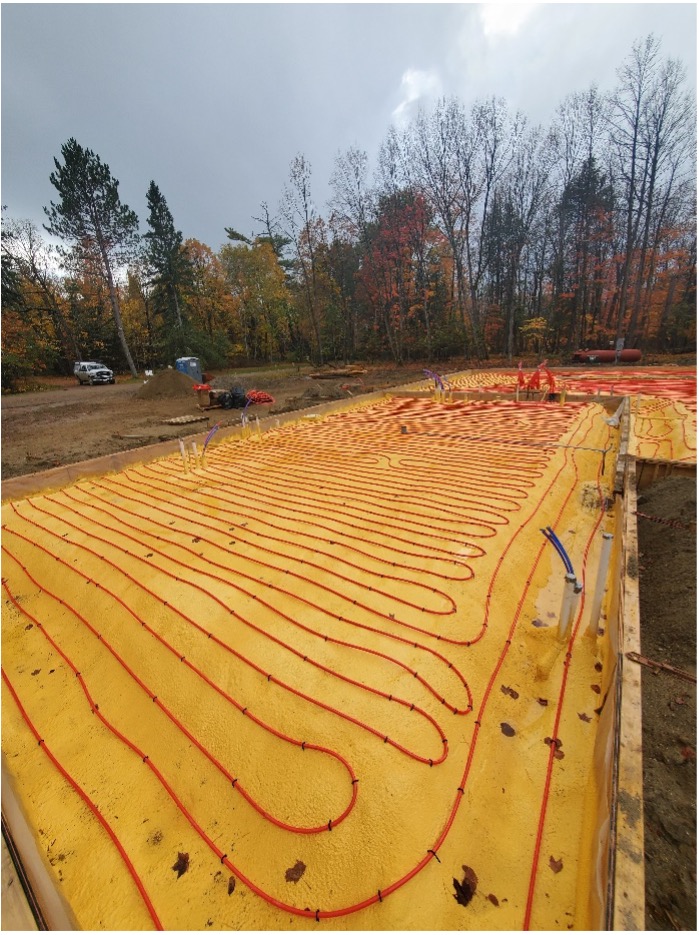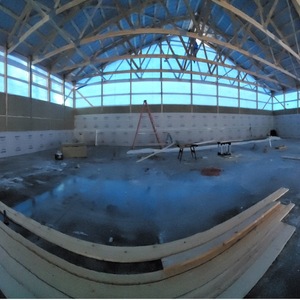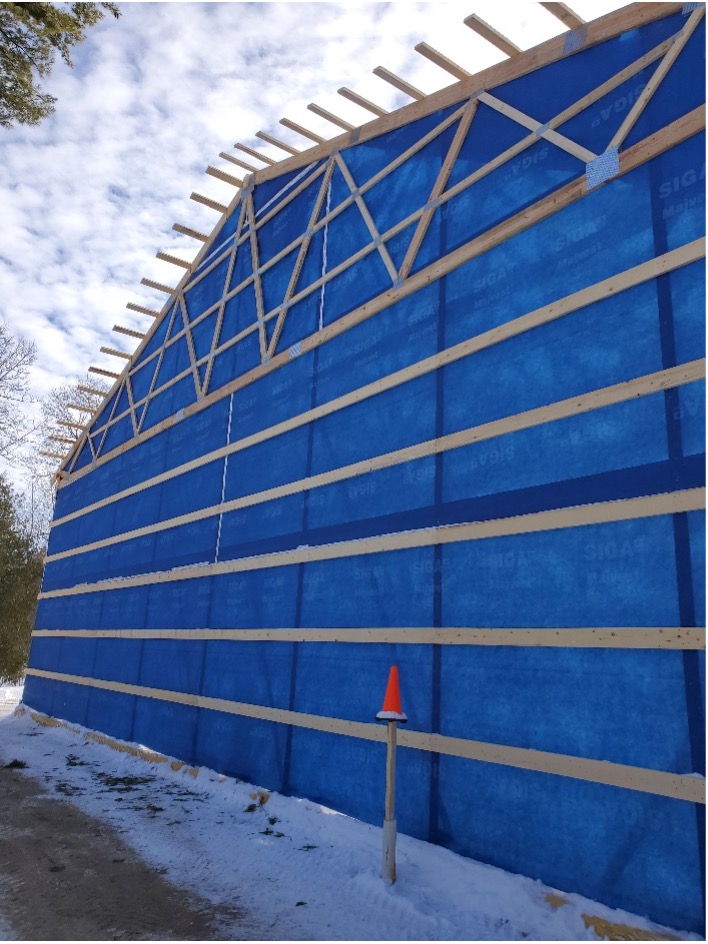
When I introduced the “barndominium” project I am working on in climate zone 6, I talked about the unique characteristics of this building type, which is part storage facility, part workshop, and part living quarters. Here, I’ll explain key details of the foundation and the thinking behind them.
High-performance cold-climate foundation
This project has a frost-protected shallow foundation (FPSF), which includes cast-in-place post brackets to secure the wall framing to the foundation. The 24-in. by 24-in. reinforced thickened-edge footing is thermally broken from the ground with 3 in. of closed-cell spray foam (CCSF)—that’s roughly R-20 both under the footing and beneath the 5-in. slab.

Why put foam under the footing? Two reasons: climate zone and heating source. Living in a heating-dominated climate can result in a moderate difference between the ground temperature and the desired temperature of the living area. This heating system includes hydronic in-floor heat. The goal is to maximize the amount of heat moving into the conditioned portion of the structure and decrease the amount of heat moving into the earth. A geothermal ground-source heat pump will supply the heat for the slab; this type of system operates at a lower temperature than fossil-fuel boiler systems. In short, measures had to be taken to ensure ground temperatures don’t suck heat from the slab.
When planning the spray foam details, I learned that 1 in. of CCSF will stop approximately 90% of conductive heat flow. At 2 in., this reduction increases to 94% and at 3 in., it’s 96%. It would take 6 in. to get to 98% and 11-1/2 in. to reach 98.9%. This data comes from the spray foam manufacturer Demilec, and is based on a delta T of 40°F—roughly the difference between the barndominium’s conditioned space…
Weekly Newsletter
Get building science and energy efficiency advice, plus special offers, in your inbox.

This article is only available to GBA Prime Members
Sign up for a free trial and get instant access to this article as well as GBA’s complete library of premium articles and construction details.
Start Free TrialAlready a member? Log in















2 Comments
Randy,
This looks like a nice job of foaming, not the first one for the contractor. How even is the thickness of the CCSF? Did the spray foam add any complications to the concrete pour over what rigid foam boards would have?
Did they use a long span power screed for the concrete pour?
Hey Doug,
The spray foam did vary some, over the 8700 square foot, 5-inch slab, I believe the concrete contractor had to order an extra truck load of concrete. Not sure if it was all needed. I missed the pour, didn't get a chance to see how they screeded the concrete, they did have a pair of riding finishing trowels. Not often they get used on a residential project. No other complications, the pour went well.
Log in or become a member to post a comment.
Sign up Log in